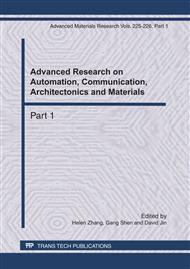p.921
p.925
p.929
p.933
p.937
p.941
p.945
p.949
p.953
A Failure Criterion for Cracked Rock Mass under Seepage Pressure and Confining Pressure
Abstract:
The existence of water affects the mechanical properties of cracked rock mass. Taking into account the friction generated by the crack closure, the stress intensity factor of the center cracked plate subjected to compression and seepage pressure was obtained through the theoretical analysis and numerical calculation of the boundary collocation method. The results show that crack tip stress intensity factor increases with the increasing of the seepage pressure, but decreases with the increasing of crack surface friction and the confining pressure. Finally a failure criterion for cracked rock mass under seepage pressure and confining pressure is developed.
Info:
Periodical:
Pages:
937-940
Citation:
Online since:
April 2011
Authors:
Price:
Сopyright:
© 2011 Trans Tech Publications Ltd. All Rights Reserved
Share:
Citation:


